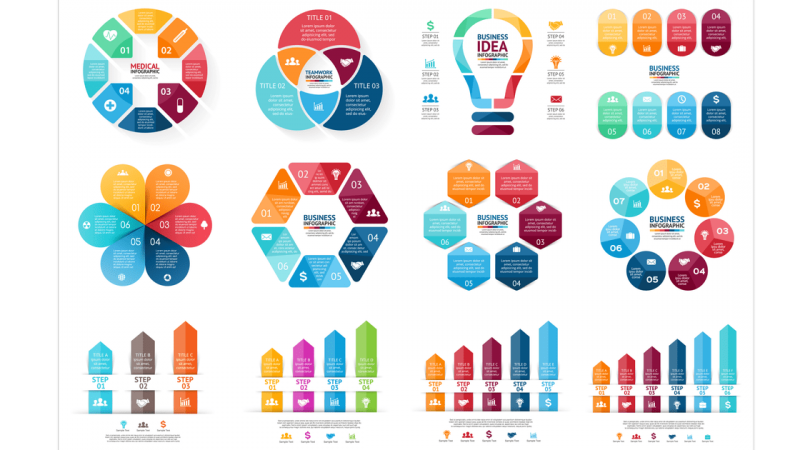5 Tips To Breathe New Life Your Existing Content

Every writer has old pieces that are still relevant today. That’s where the expression “classic writer” comes from — a past author who is valid in present times. The essential thing is to find the right way to breathe new life in your existing content. Sure, we may not be on par with Orwell or Dostoyevsky, but that doesn’t mean anything. Unless there’s a sudden paradigm shift, past writings have a lengthy lifespan.
Creating new content shouldn’t start from a blank page every time. Think of the subject matter and ask yourself if you have already written something on the topic. Open the old file and a fresh new one. Read the piece to remember the points you’ve made. Next, briefly copy the main ideas, facts, statistics, and any other relevant findings to the new paper. Elaborate on the existing information, add new copy, and re-format the article.
Re-write
Every piece you write must pass for anti-plagiarism. Even if the ideas are old, the copy should always be new. Original content is a must for both readers and search engine index crawling. A duplicated article will disappoint readers. But most importantly, copy-pasted writing will deter crawling bots to rate your content highly. Instead, the analysis of the search engine’s bot will result in negative ratings and will bury your page from the index.
It’s vital to re-copy the old item uniquely. Take phrase by phrase and re-word the information. Break-up paragraphs. Re-arrange the content to make it look and read fresh. Add more facts, statistics, and hyperlinked data. Play with headings, bullet points, and re-invent the title.
If you’re having difficulties transforming a small post, consider adding more editorials. A good approach is to combine more than one article as a professional writing services strategy for the re-writing process. Draft a bigger white paper, guide, or review from multiple old pieces. Add transitional text and strategic headings to glue the different passages together. Additionally, package the result in a new layout. Share the newly formed hardcopies with your audience by placing a registration form, e-mail subscription list, or any kind of white bribe. Don’t forget to make sure the content flows naturally and provides useful information.
Re-format
Visibility and easy access should be the keywords when talking about formatting. Ask yourself what can be improved. Put yourself in the reader’s shoes and imagine you’re viewing the text for the first time. Is it easily readable, can you access the chapters, are the paragraphs too long, do you have enough bullets points?
In a fast-paced society, readers changed their attention span and habits. We tend to scroll fast to the bottom, read in-between the lines, decide if it’s worth it, and then go back to the top. A good writer thinks of this and adapts accordingly.
Re-purpose
What do you expect to achieve with the new piece? Re-purpose your article around the answer.
- In need of more views and shares? Consider creating cross-platform material to share on multiple social media websites. Make a promotion-compatible piece and just work the corners to fit different websites. Incentivize the viewer to share the content. Try using images, videos, GIFs, and bullet points.
- Want more e-mail subscriptions? Design an e-book or automated campaign for weekly newsletters and such. For this one, you’ll have to plan and ready-up 5,000 words for the e-book or a couple weeks’ worth of consecutive posts for the campaign. In any case, by expanding content longevity, you’ll drastically reduce the creation time. Find your best posts, revamp them, stick them together, and re-purpose.
- Are you thinking of tapping into a new public? If yes, then you’ll need to get to know your target audience: research age, social and cultural status, economic power, and reading preferences. Young people are more attracted to visual blog posts, while older people prefer formally written content. Not to mention, that marketing to different groups is tricky as well. You’ll have to know where to find your audience and how to attract them to you. Convince them you have something to say, capture their attention, and make it easy to access your material.
Anticipate your reader’s needs and market accordingly. Indulge your readers with personalized posts for each group. A mix of entertainment and information will yield the best results. Also, juicy titles, sub-titles, and heading, with visible bullet points are key. Add calls to actions, and don’t forget to deliver on promises with worthwhile information. Use clear and active language, aesthetically hyperlinked with strategic URLs. Also, you can type out one of the links to show the reader he can trust you.
Re-convert
Capitalize on different markets by re-converting the existing format into something else. For example, a text can become a video, podcast idea, a series of infographics, or even vice-versa. The sky’s the limit, but some of the most effective re-conversions are:
- Creating an e-book from a blog series is very time efficient. Put your posts in a logical order and paste them into a file. Attach everything to form a comprehensive e-book. Aim for around 5,000 words.
- Even the most boring post will catch an eye in the form of a video. Consider adding visual stimulants and videos or GIFs to your posts.
- Create tweets or small social media updates with past stats and findings. Find the most attractive data in your old posts are convert it into a fact. Post the statement as a “want to know more?” and send further.
- Invent a podcast or interview from past content ideas. Use the inspiration of past researches and capitalize on it. At the end of the discussion, redirect towards an in-depth study of your original article.
- Add GIFs and images throughout the old article for a slower scrolling. People love visual stimulants while reading. The age of the reader doesn’t matter. Comic books and magazine-type publications will reward reading.
- Use the website host features to your advantage — select emojis, designer buttons, and other colorful items. By highlighting your idea with readily available elements, you’re making good use of the page. Don’t overuse them, just enough to stand out.
Follow-up
Whether you want to create a series, or just revamp an old piece with new info, keep in mind that readers love numbers. By integrating a logical succession of numbers, you’ll attract the public to start reading.
That’s why top lists are so regular these days: “X ways to do this” or “Y tips on having that.” Not to mention that you’ve potentially created X or Y new topics to develop in the future.
The same goes for an e-mail campaign or series of any sort. Start the titles with “1st part” or “2nd chapter” to offer chronological consistency. Put URLs at the top and bottom to redirect to previous or next chapters for easy navigation.
Nobody starts from a completely blank paper. Inspiration is necessary, and if it’s from your past material, then better yet. To breathe new life in your existing content, you’ll have to diligently re-write the phrases, so it’s all original. Improve the formatting and consider adding a follow-up story to your post. Finally, think if you’ll benefit from re-purposing and re-converting the old articles. Keep a fresh appearance and always offer useful information. Only by helping your reader will he help you in turn.



